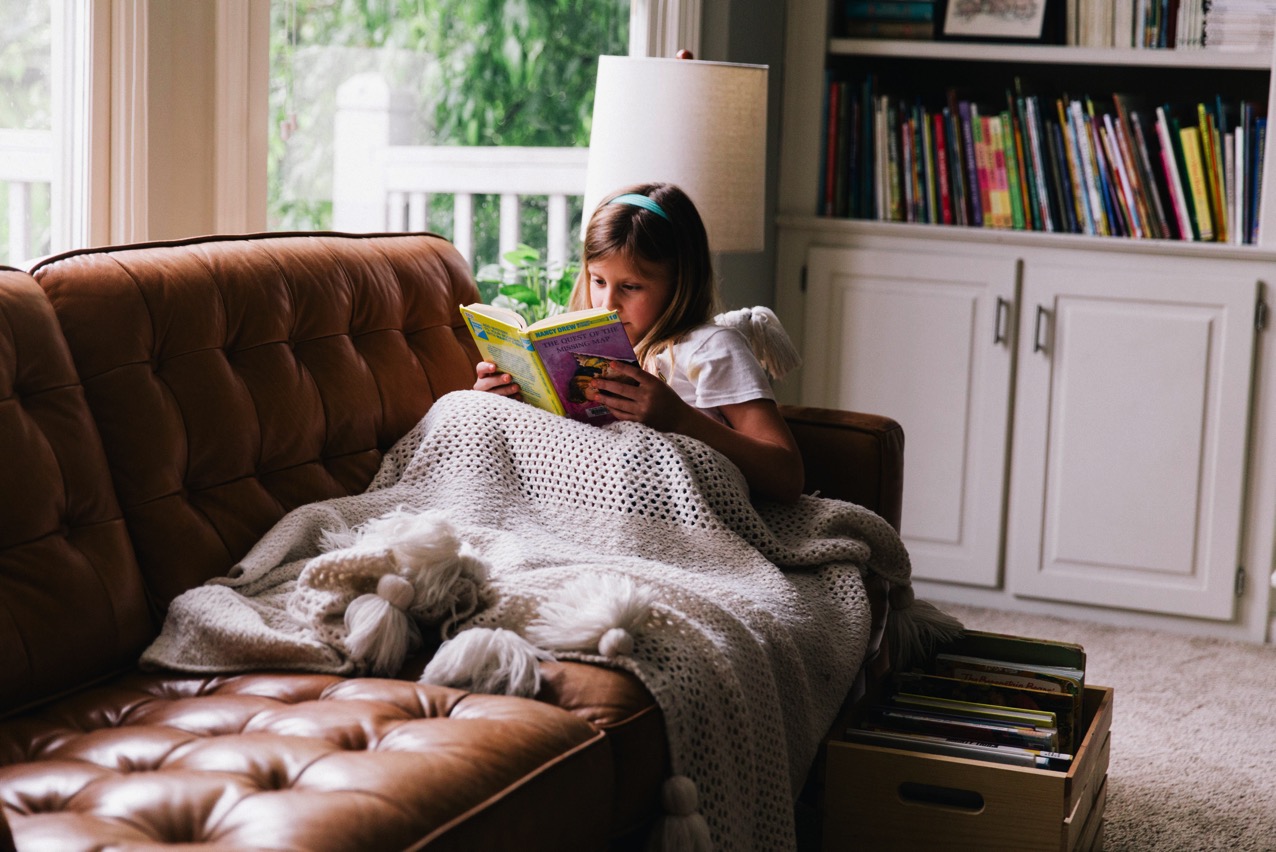You’re in a great routine and then hits you out of nowhere: your two-year old stops taking naps. They are awake crying in their crib or simply refusing to fall asleep to your normal nap routine. No amount of books, rocking or cuddling will coax those sweet little eyeballs shut. (Oh, please, Lord, make it sleep!) What do you do?
I was in this very place when I was pregnant with my third daughter. My oldest had stopped napping at twenty months old and I had not fought her on it. Life as a pregnant woman with two toddlers seemed hard and I just wanted to keep the peace. (This is survival mode, and it’s needed in certain seasons!) Over time, I began using movies every afternoon so I could put my cankles up or check my email without interruption. My midwives at the time insisted that I needed to rest lying down and encouraged me to set up a daily quiet time for my daughter.

I knew it would be a wonderful chance for her to rest and learn to play independently, but it was intimidating to think of taking away the screen time she had been used to getting. So we started small (fifteen minutes) and worked up from there. I’m so happy to tell you that just a few weeks of set-up yielded a routine that served me through months of sleepless nights, new babies, sick toddlers and long homeschooling days. It’s my life raft on days that have gone awry!
Once I got this rhythm in place, it was a breeze to bring along younger children. It was exciting to “graduate” from naps to playing in their rooms all by themselves. As they grow, it gets easier since older children enjoy the chance to have some alone time.

Here are my tips for implementing daily rest time with a child who has stopped napping:
1.) Start with Rock Bottom Expectations
If you’ve been around this blog, you know my personal motto: rock bottom expectations are the key to happiness. I want you to start by lowering your expectations to rock bottom. You’re building something from the foundation up, so the bottom is where you’ve got to start.
Expect implementing a successful rest time to take weeks or even months. Expect that the first time they’re in their room, they’re going to come out about every seventy-three seconds whining or suddenly in desperate need of a snack. (Over. And over.) Expect minor disasters of all kinds while your child is in their bedroom “resting” (Curtains coming down, bathroom breaks ending in toothpaste explorations, the possible need to call a plumber). The great news is that there’s a lot you can do to make this activity pleasant and relaxing, which I’ll talk about below!
If your first attempts at rest time doesn’t yield and hour of quiet, this is not a sign to give up. It’s simply a sign that you’re in a crucial building phase. One brick at a time, you’re constructing something that’s going to hold through all of life’s ups and downs: long homeschool days, vacations, illness, pregnancies and new babies.
2.) Communicate Time Frame
After we adjust our expectations, let’s make sure we are effective communicators. When we clearly communicate our boundaries to our kids what we need and are asking them to do, it helps build a trust relationship. Even very small children understand much more than we think they do.
When it comes to rest time, communicating time frames (and then sticking with them to the minute) are everything. They help everyone relax. Tell your little one about your new routine and when it will be happening. Will it be after lunch? Before dinner? Maybe after a short reading time.
Then tell them how many minutes you are asking them to rest in their rooms. For a small child you can set a timer (we did this for many years!) If they can tell time, give them an exact clock reading. All they need to do is stay in their room doing something quietly for that amount of time. When the timer rings, it’s time to come out!
How long should you start with? I always start with 15 minutes. (Celebrate and make a big deal about this!) You’ll be able to move up from there very quickly as your child acclimates to the routine. One hour is a great goal!
3.) Give Choices of Activity
One of the best ways to sidestep a rest time conflict with kids is to offer choices of activity during rest time! I give my boundaries (time frame) and then I offer as many choices as I can within those boundaries. This gives them a feeling of autonomy and control; and who doesn’t need that?
I would encourage you to build this up for a week or so. Take some time to purchase a few inexpensive rest time toys (novelty is everything) or find a small CD player with audio books or children’s music. (You know, the kind the rest of the family hates listening to in the car!) Maybe your little one would even enjoy going to the Dollar Store or thrift store to pick a few special things for a rest time basket.
Try some of these captivating audio book series for children, or these beloved picture books for preschoolers. An older child who can read chapter books might like a challenge to read one of these classic books with the reward of watching the movie after.

4.) Give Choices of Location
I also offer choices on location. For younger ones, resting on Mom’s bed or in the guest bedroom can be a novelty. I allow older kids to be at the dining room table doing art or in the basement building Legos as long as it’s quiet for one hour. No noise is the only rule.
Choices have been the key to successful rest time in my home; I allow a lot of things as long as they fit into certain guidelines. The bottom line is, they can do whatever they’d like in their rest time spot as long as it’s quiet and they don’t come out until rest time is over.
Assure your little one exactly where you’ll be and what you’ll be doing during their rest time. (Example: “I’ll be laying on my bed reading my book while you’re resting.” Or “I’ll be at my desk filing some papers.” )

5.) Plan a Pleasant Activity to Look Forward to After
It’s just as important to talk about what’s going to happen after rest time. Let’s put an end in sight and make it something pleasant! For us that is simply snack time, but it could also be bubbles on the porch, a walk to the park, or a game time with mom. After rest time is a great time to bake muffins or cookies. At our house, snack time after a rest (3:30!) is staple. I offer fruits, nuts, cheese and occasionally a treat like crackers or homemade cookies.
It always come faster than I want it to, but it’s really important that we keep our word. When rest time’s over, its time to bake those muffins or go for that walk to the park! Keeping our end of the bargain will build more trust and connection every time we follow through.
When your little one completes their rest time successfully, it’s time to slather on the praise! Call dad or grandma to report. Talk about how big they are! (A little like potty-training!) What a help they are to mommy when they can be big in stay in their room for a whole hour!
It won’t take long until rest time is a normal routine in your home; everyone will look forward to it. During the year, we used rest time to as a quiet time to do school while our toddler was napping. The girls loved having a house quiet with my full attention. Right now during rest time they escape to the basement to listen to audio books and work on their Lego town.
This is so worth investing in; in fact, it’s the number one self care tip I recommend for mothers (especially those who homeschool!) It’s such a wonderful anchor to have in your day; shifts everyone’s mood and refreshes the whole house.
If you’d like to try implementing a rest time, join our 5×15 Summer Challenge where we’ll be practicing some of these routines together!
Psssst. If you enjoyed this post, please consider signing up for my newsletter to get all of my posts delivered straight to your inbox. You can follow me on Instagram, Facebook, or Bloglovin. I also invite you to join the conversation by logging in and commenting below!